IN power consumption, KFA2/Galax has chosen a golden middle ground. The set Power Target of 275 watts is of course fully exploited during gaming and stress testing. The increase in the afterburner to the real achievable maximum of approx. 350 watts is then more than enough, as long as you haven't completely missed the GPU lottery.
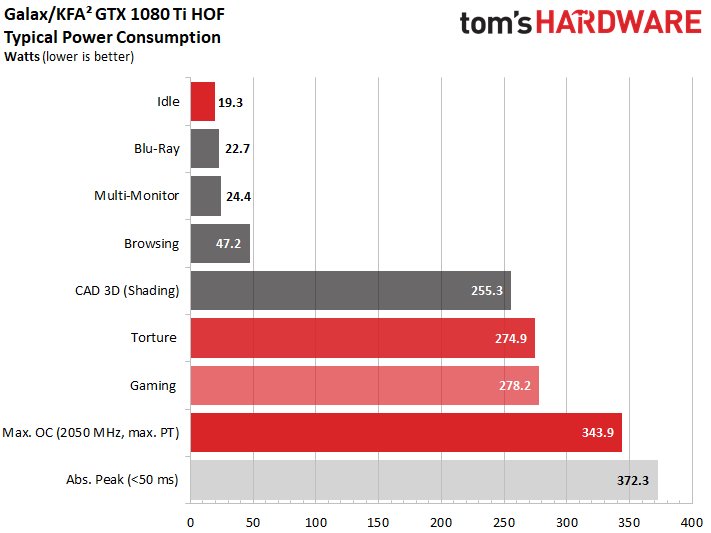
The chip on the test sample is not a top class, but good enough to reach 1.05 V just under 1947 MHz – provided the card stays well below 50°C. Below 65°C you can still get 1936 MHz out-of-the-box with 1.05 V.
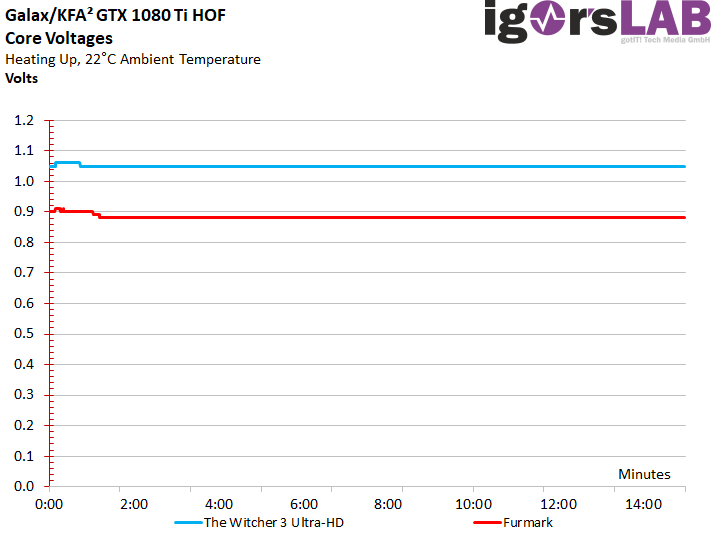
More about the gaming loop
Now let's look at the curve for the power consumption separately according to the individual supply rails (rails) in a higher resolution over the period of two minutes. Despite our intelligent low-pass filter, some spikes remain visible, which can then be used up to approx. 330 watts (without overclocking). On average, the map is only approx. 3 watts above the set power target of 275 watts.
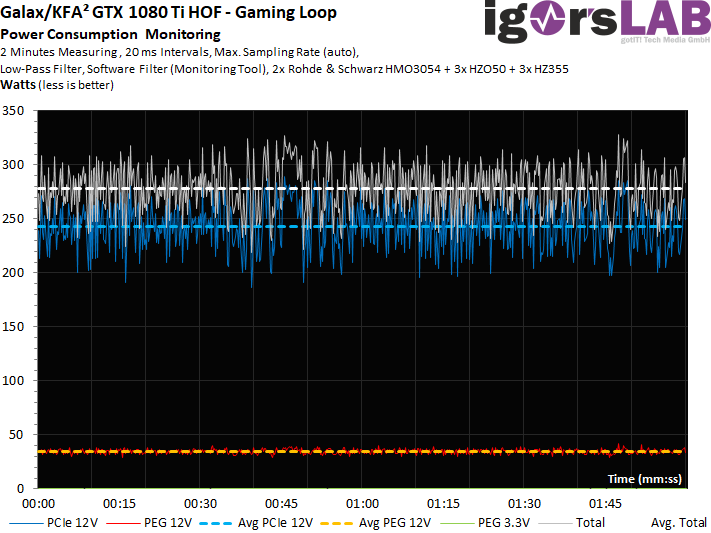
For this purpose, the curves of the currents look identically hectic:
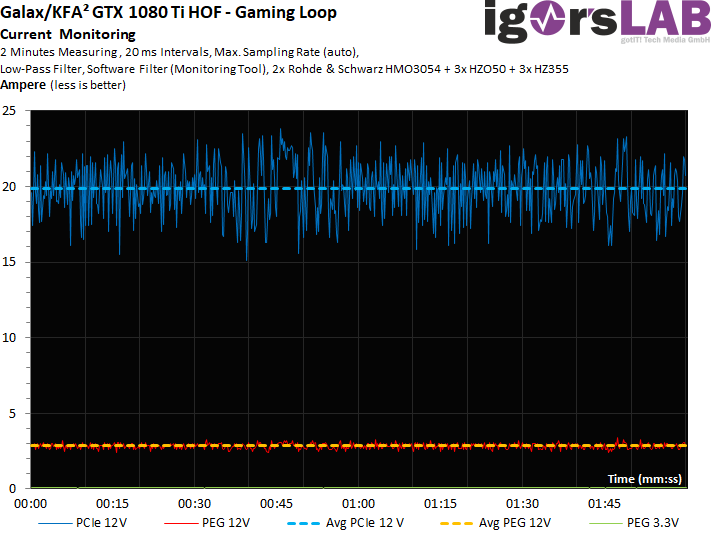
Torture test in detail
Since the load is more constant, the power consumption increases again somewhat as an average value, but the peaks are almost completely eliminated. We see very nicely where Boost is already starting to brutally throttle the power consumption and the card lands almost exactly on the Power Target at the average.
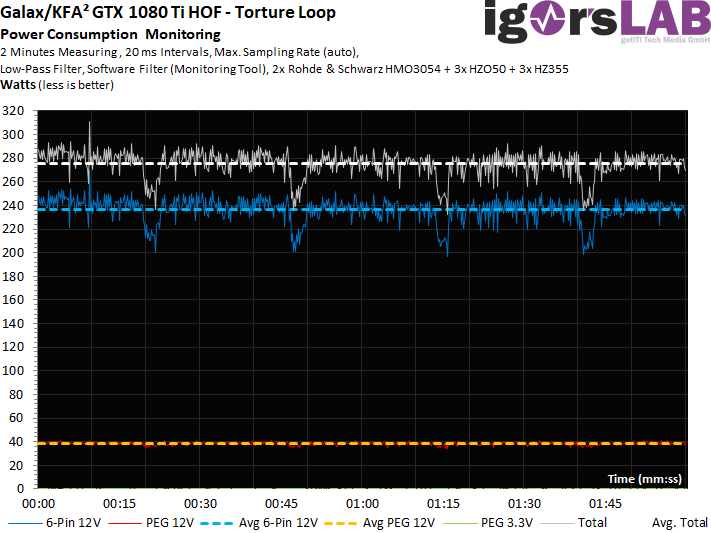
Again, analogously, only the view of the flowing currents:
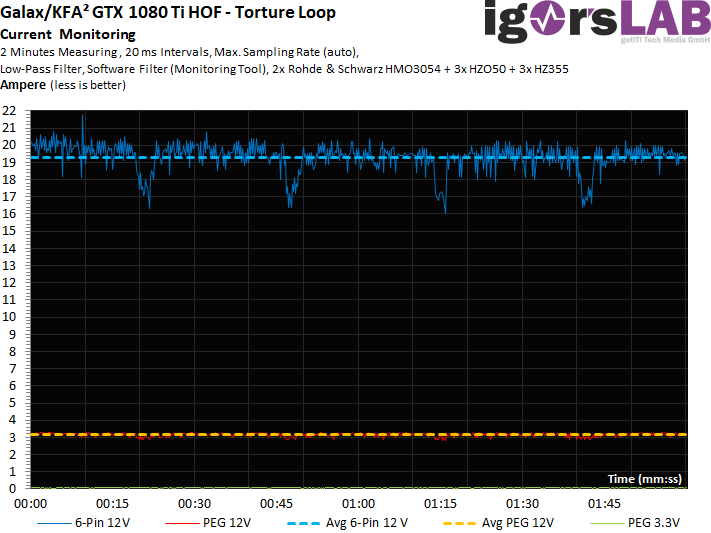
Utilization of the motherboard slot
This point has been repeatedly demanded by readers since the launch of the Radeon RX 480 (also for Nvidia cards), so we will now include this point in every test. With the card tested today, however, the concern is unfounded, because the slot is used very moderately with just over 3 amps and offers any desired overclocking room.
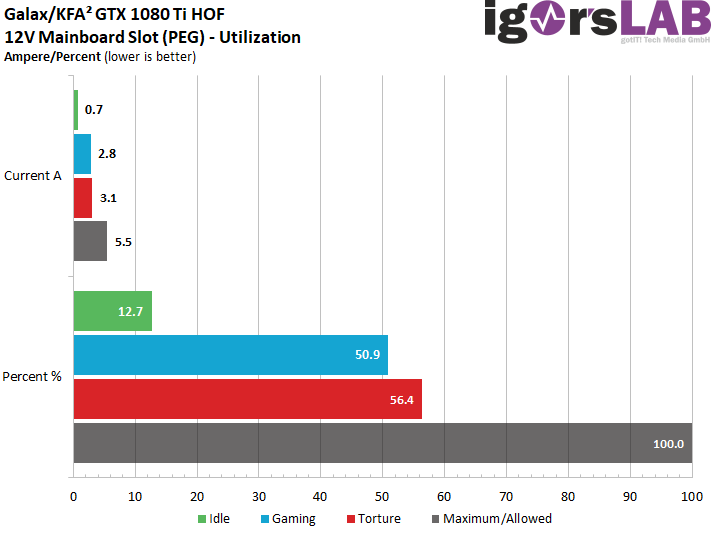

































Kommentieren